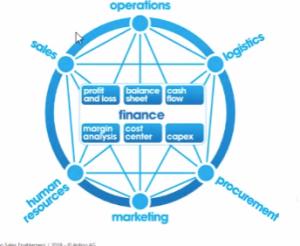Over cookies op deze website Onze websites hebben een aantal cookies nodig om goed te kunnen werken (verplicht). Bovendien kunnen andere cookies met uw toestemming worden gebruikt om het gebruik van de site te analyseren, de gebruikerservaring te verbeteren en voor publiciteit. Raadpleeg voor meer informatie de opties voor uw na te kijken. Door onze website te bezoeken, gaat u akkoord met onze informatieverwerking zoals beschreven in de IBMprivacyverklaring. Om een vlotte navigatie mogelijk te maken, worden uw cookievoorkeuren gedeeld door de hier vermelde IBM-webdomeinen.
Data & AI
Supply Focus: taking your supply chain to the next level
27/09/2021 | Written by: Dave Heleu
Categorized: Data & AI
Share this post:
Supply chains are an organization’s life blood, manufacturing and delivering the right quantity of products to the right locations at the right time. However, they are easily disrupted by external factors outside the control of the organization. So, how can you streamline your supply chain to handle potential issues while enabling your organization to enjoy the benefits?
Planning across your entire organizations
The actions of almost every department in your organization, from logistics and production to finance and sales, can impact your supply chain. Supply chain planning would be simplified if all departments had access to a single plan, where a change in one part of the plan by one department would automatically update other parts so that everyone is working towards the same target figures.
Supply Focus from Cubewise
With Supply Focus from Cubewise, this single connected system is now reality.
Individual departments continue to do their own planning. However, Supply Focus ensures that all data is funneled into a single central location, where it is used to automatically update all connected plans via the Alignment module. Departments can adjust elements of the plan to meet their specific requirements, for example, the Merchandise Plan could use slightly different numbers as they have to take into account that there could be theft or returned items in their retail locations.
Supply Focus in practice
We have seen organizations enjoy substantial benefits thanks to improved supply chain efficiency from implementing a single planning system. However, in our experience, it is necessary to roll out a new system carefully and strategically. Some groups within the organization may not appreciate the increased transparency and clarity that the single system can shine on the workings of their department.

Supply Focus as part of Unified Performance Management
The ultimate goal for many organizations is Unified Performance Management (UPM), which uses finance to form links across the organization and impacts almost every process and department including the supply chain. However, even with the benefits that UPM offers, it can be challenging to fully implement it, leading many organizations to turn to Cubewise for advice and guidance.
Take the next step
Are you interested in exploring how Supply Focus and UPM from Cubewise can help your organization? Contact us to discuss your unique situation.
Supply focus is build on IBM Planning Analytics powered by TM1 – Discover more Planning Analytics features

Dave Heleu
IBM Business Partner @ Cubewise
More Data & AI stories
Automate work and accelerate business growth
Many companies need help to navigate the rapid changes that define today’s business environment. To improve their responsiveness and flexibility, they are looking for new ways of conducting business, rethinking their processes, and investing in digital transformation projects to increase the robustness of their operations. They rely on business automation technologies to cut out repetitive […]
Sustainability and the technologies enabling the transition
Creating a sustainable future demands significant technological innovation to decarbonize society, restore biodiversity and ecosystem health, foster thriving oceans for sustenance and economic growth, remove atmospheric carbon, transition to sustainable agriculture, and advance eco-friendly cities that align with our vision for a better future. Generative AI has achieved much in recent years and now surpasses […]
Data-driven asset management with IBM Maximo Application Suite and Cloud Pak for Data
IBM has enhanced its Enterprise Asset Management platform, IBM Maximo Application Suite (MAS), with IBM Cloud Pak for Data: a supporting platform which provides a framework for combining a variety of data from different areas of an organization. How does IBM Cloud Pak for Data help organizations gain additional asset management insights from available data? […]






























